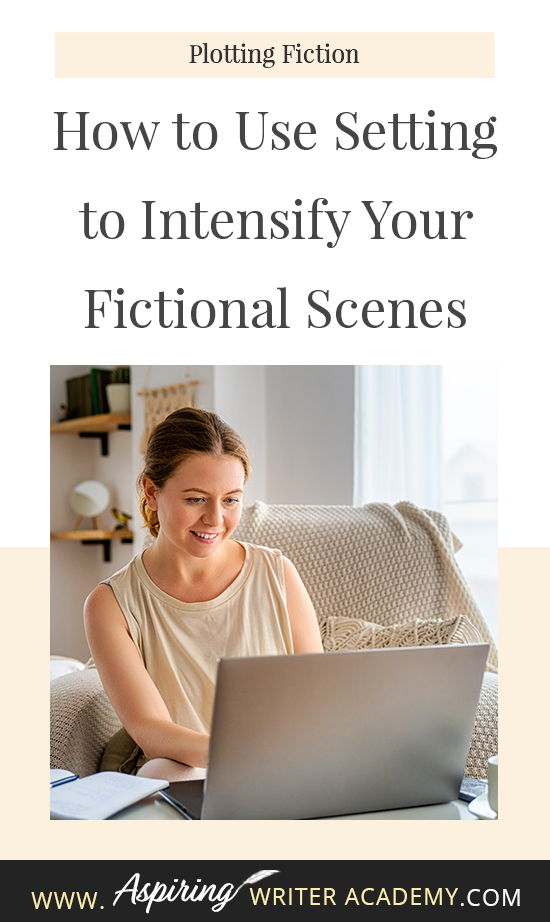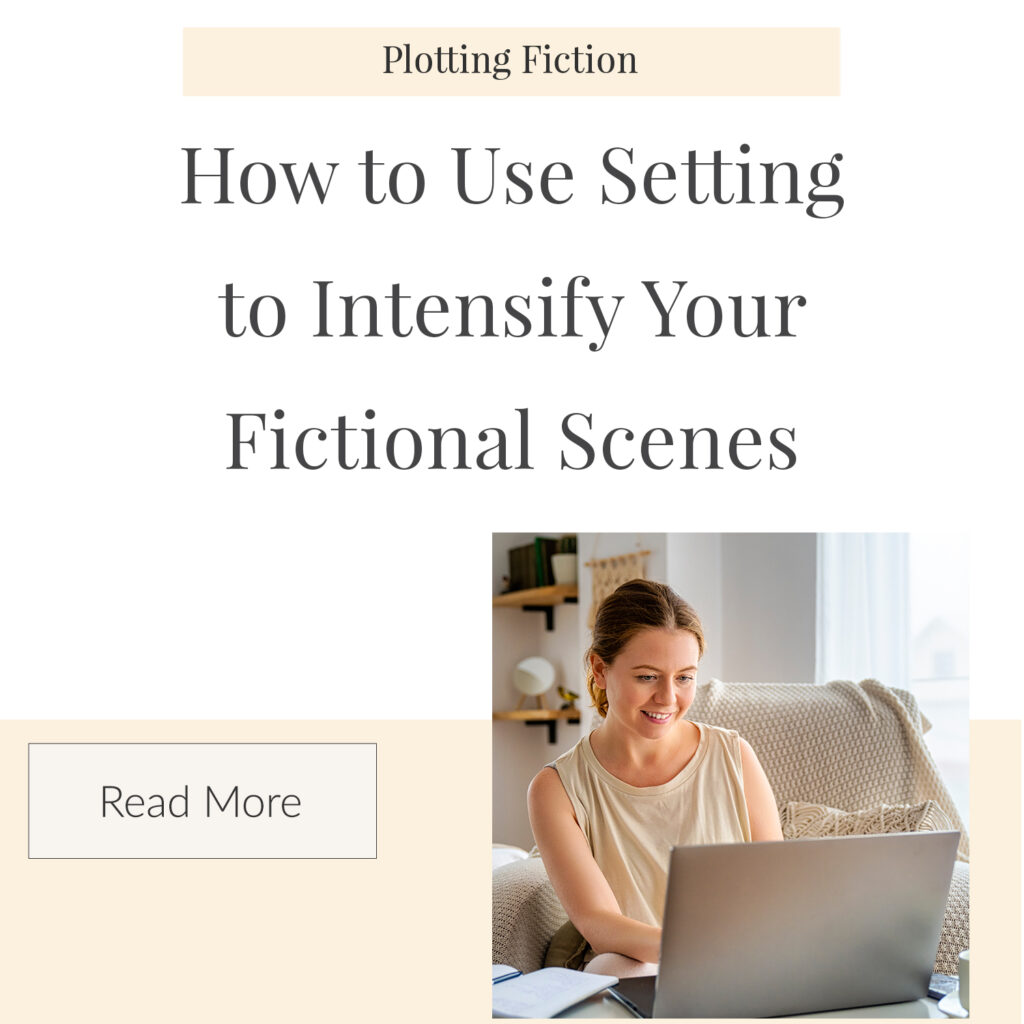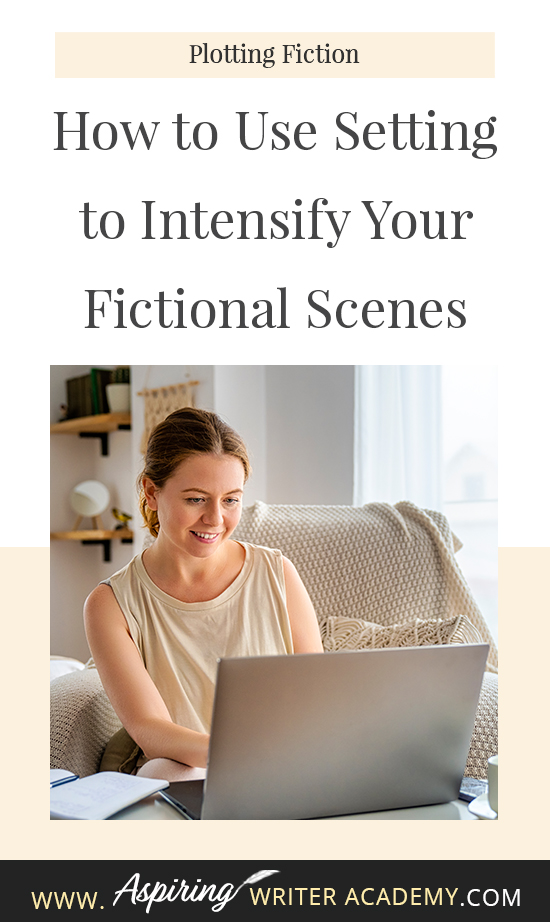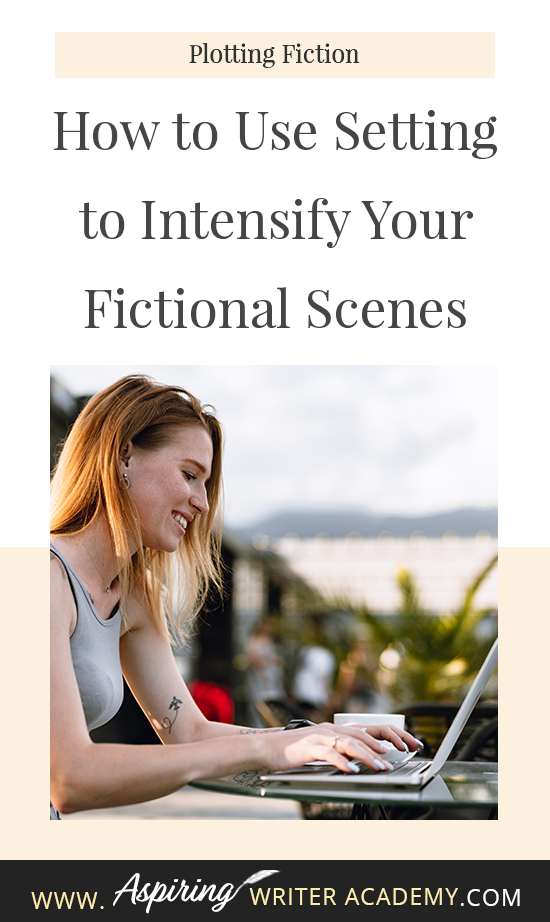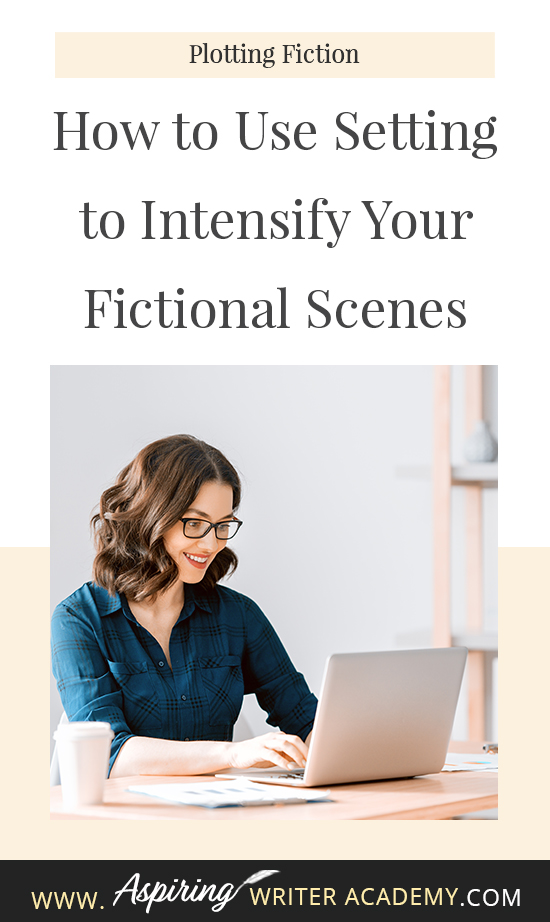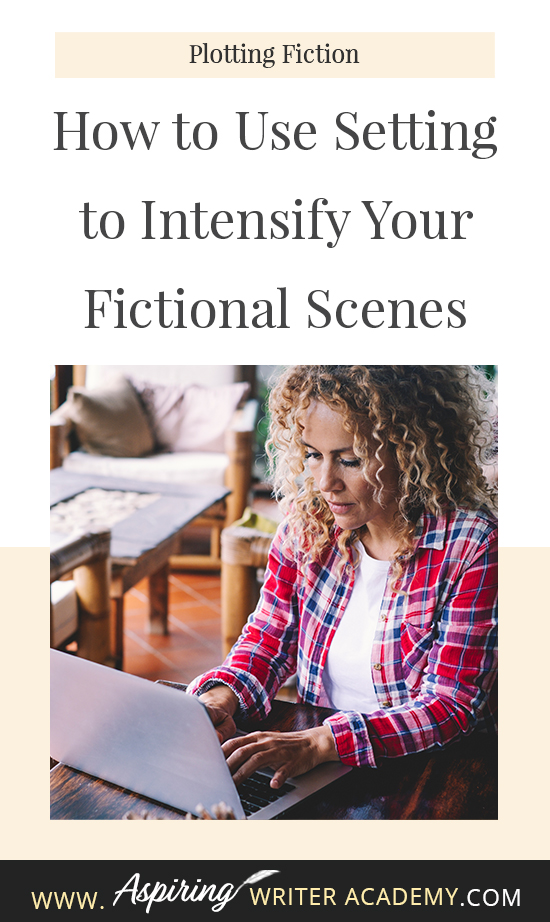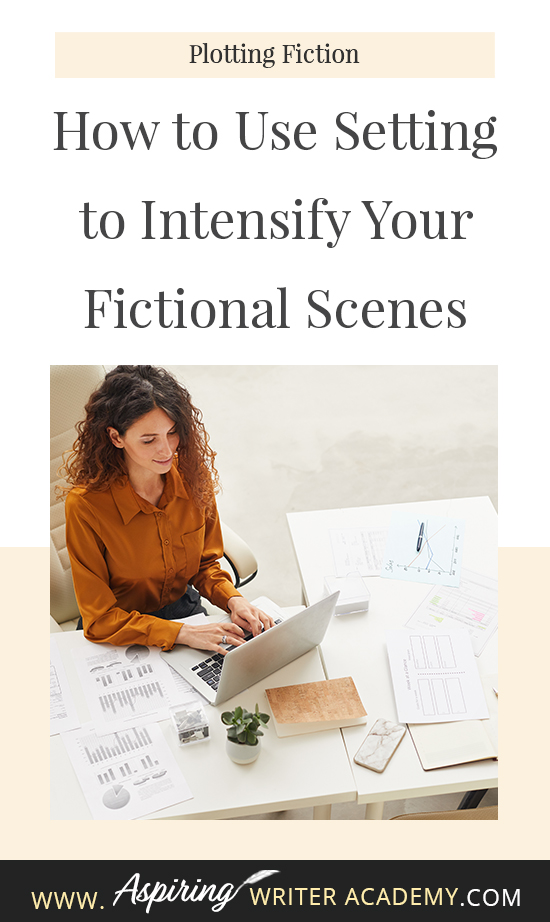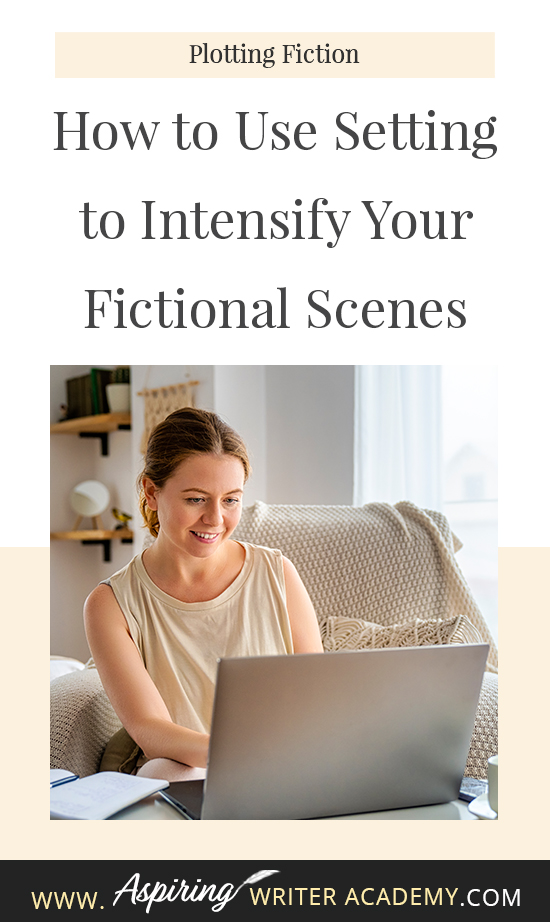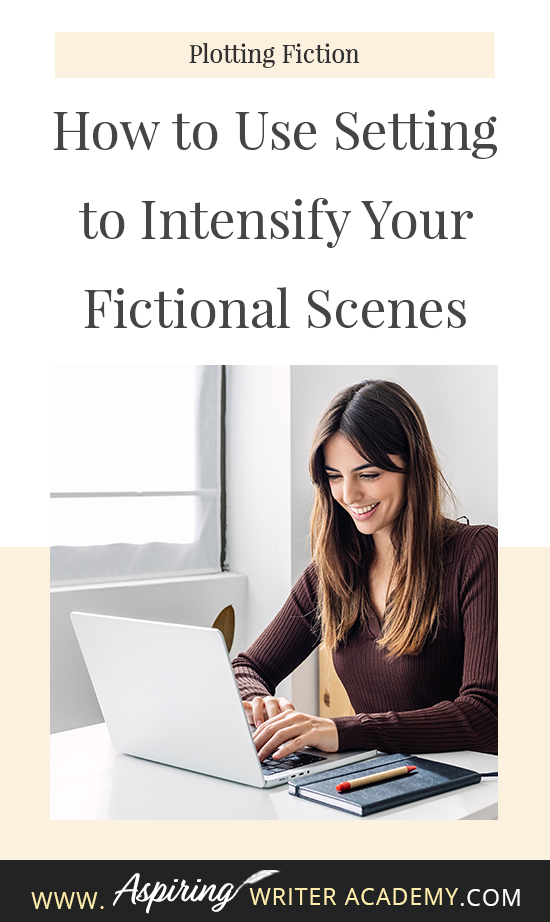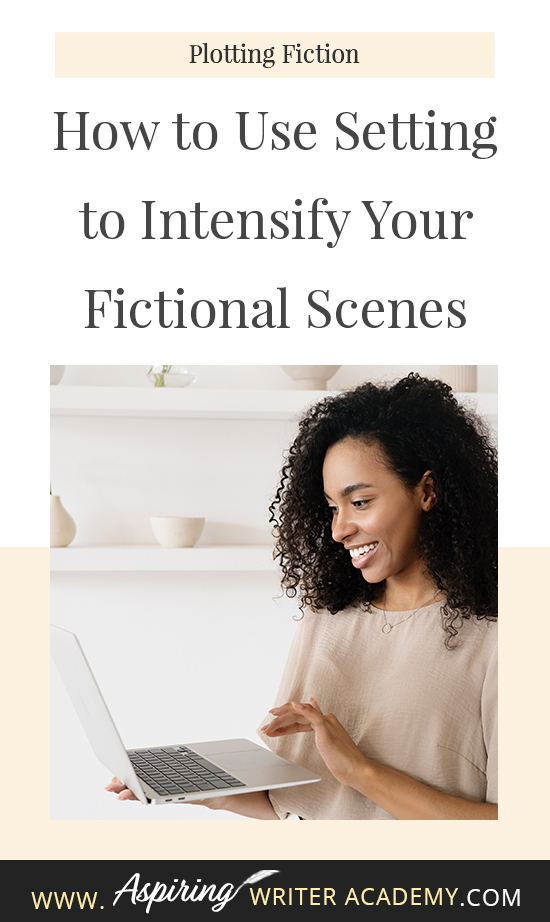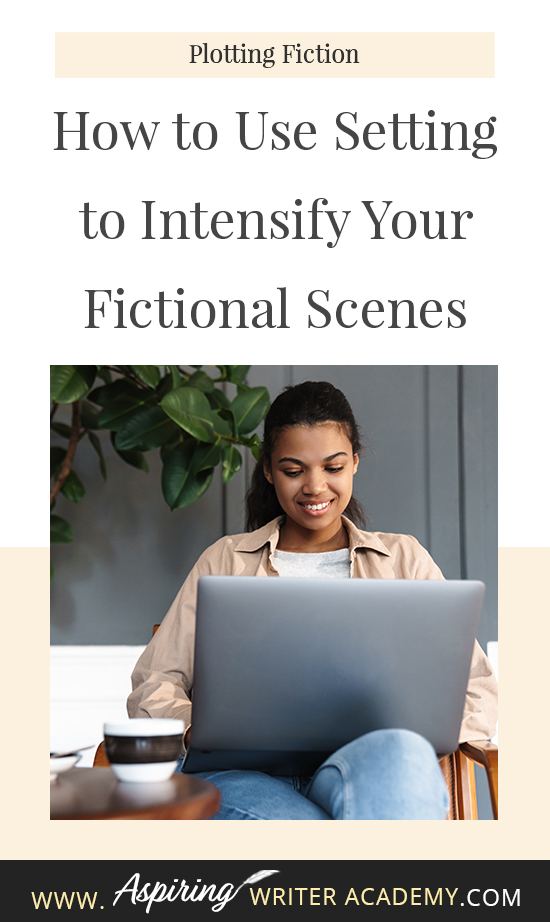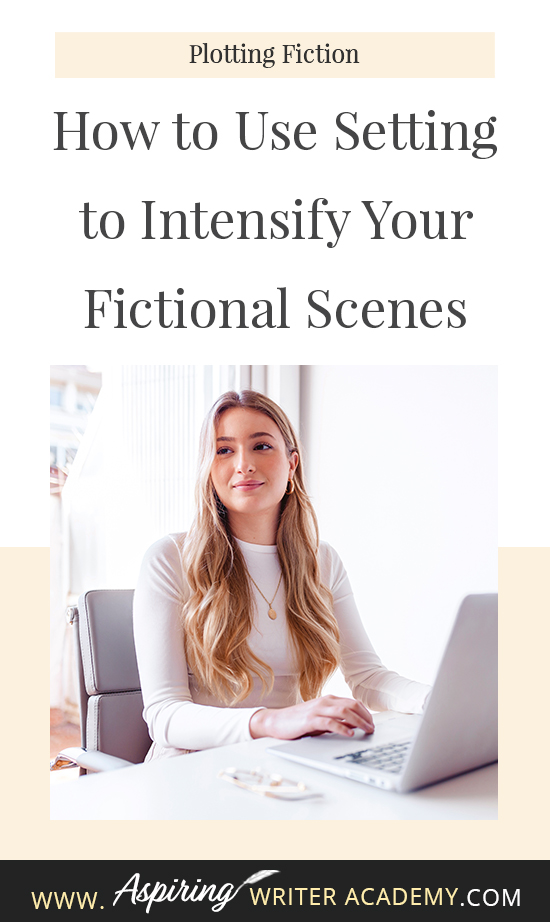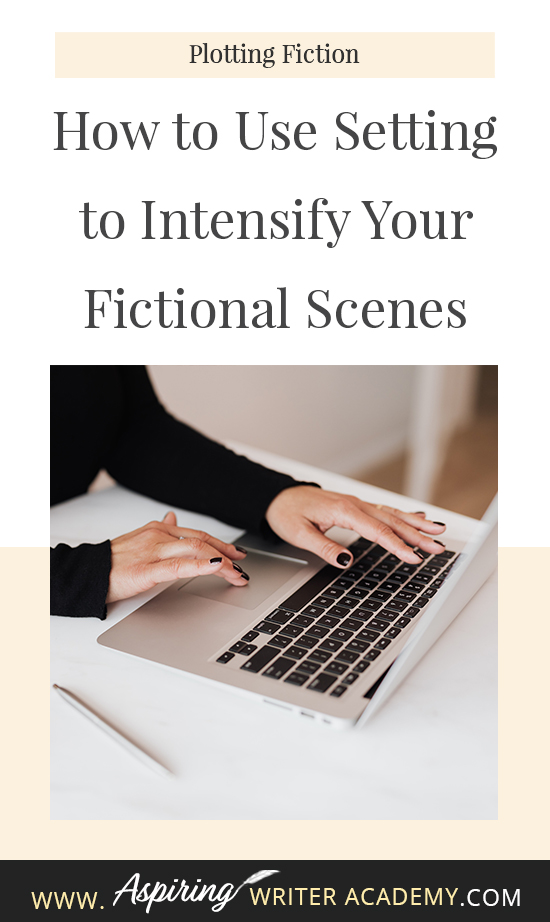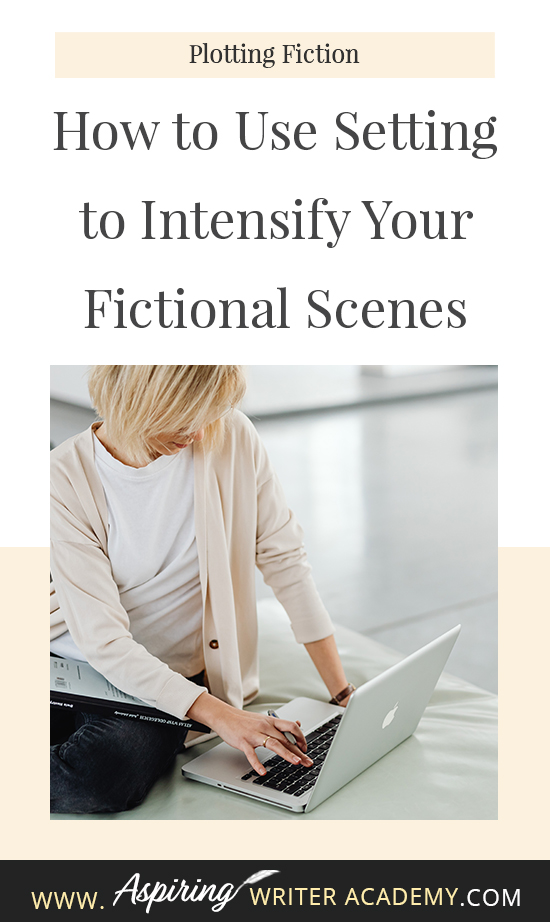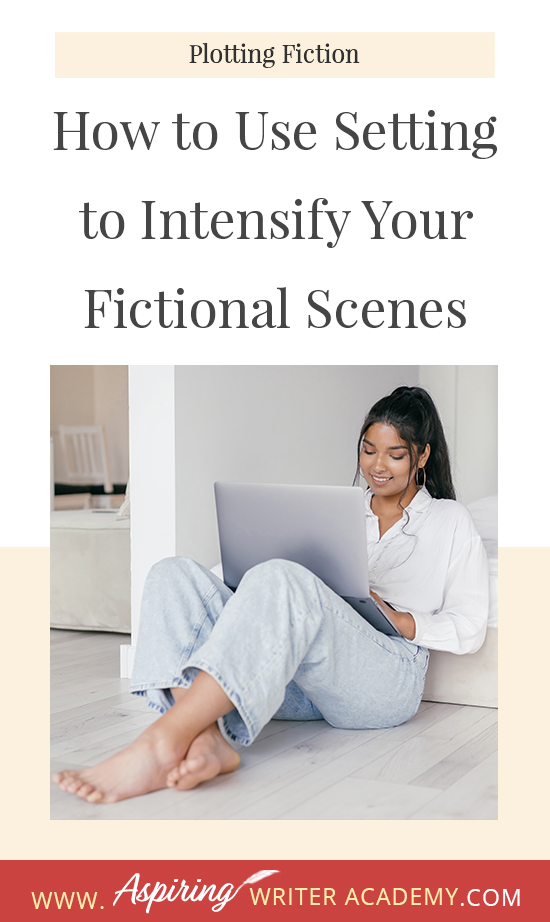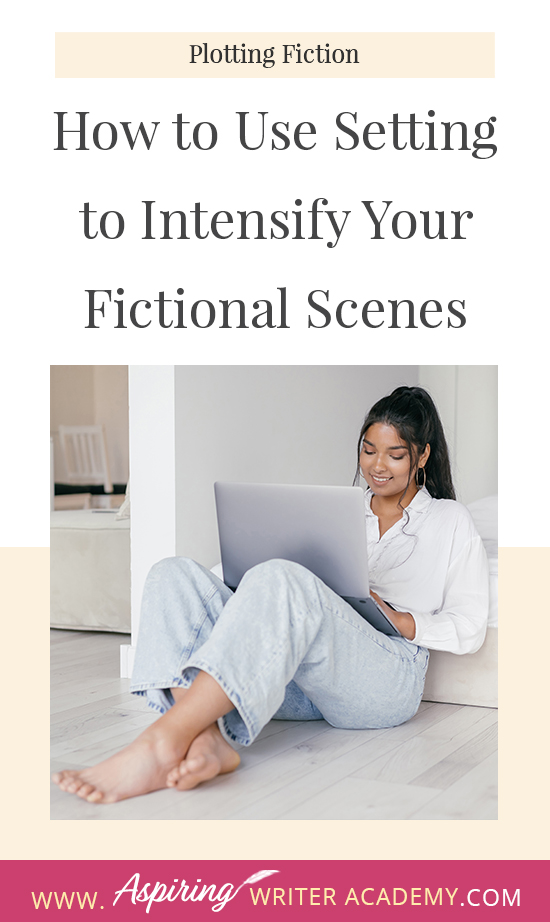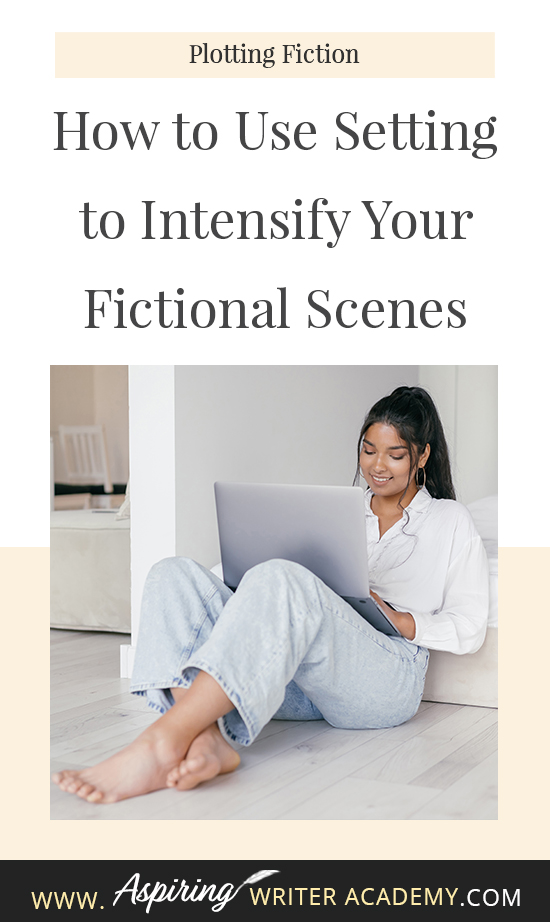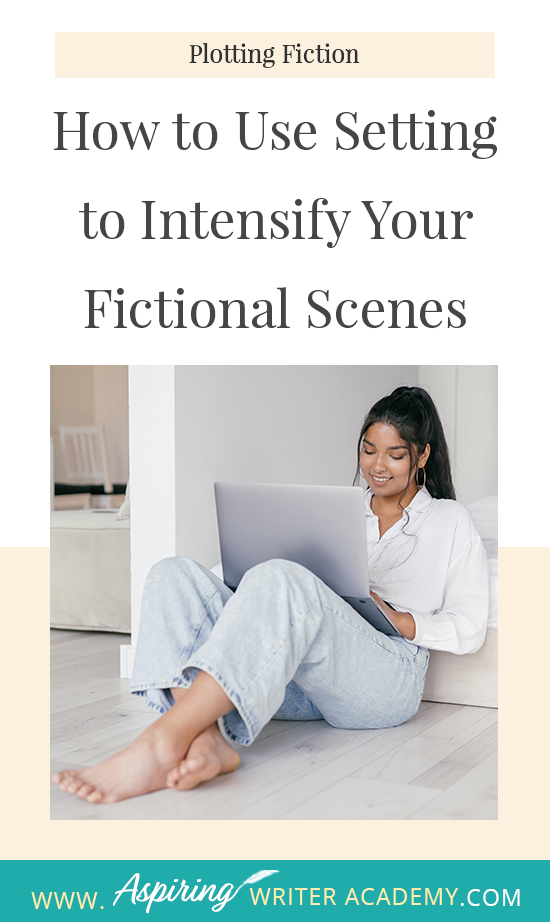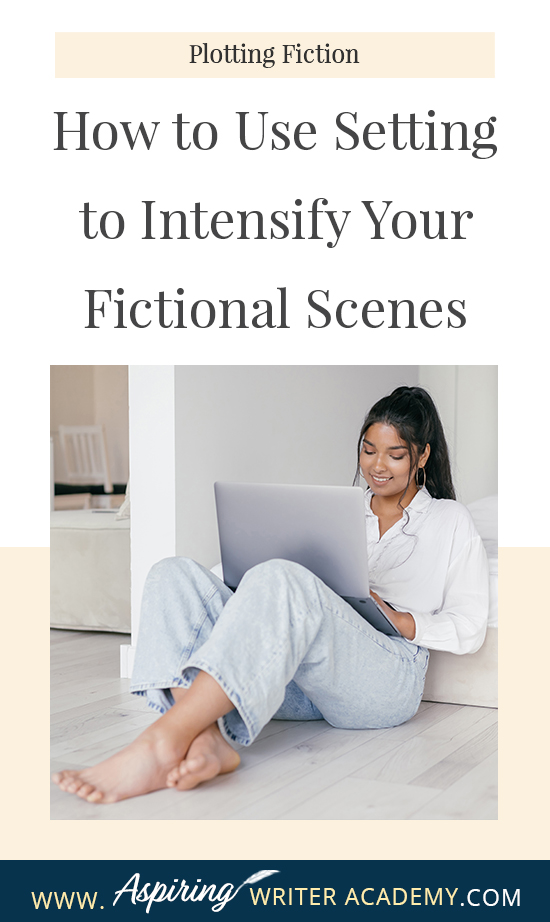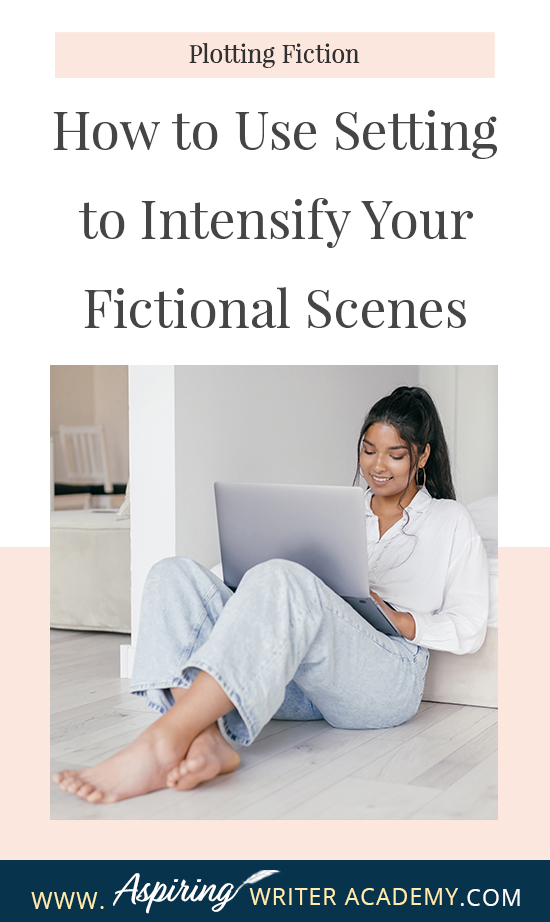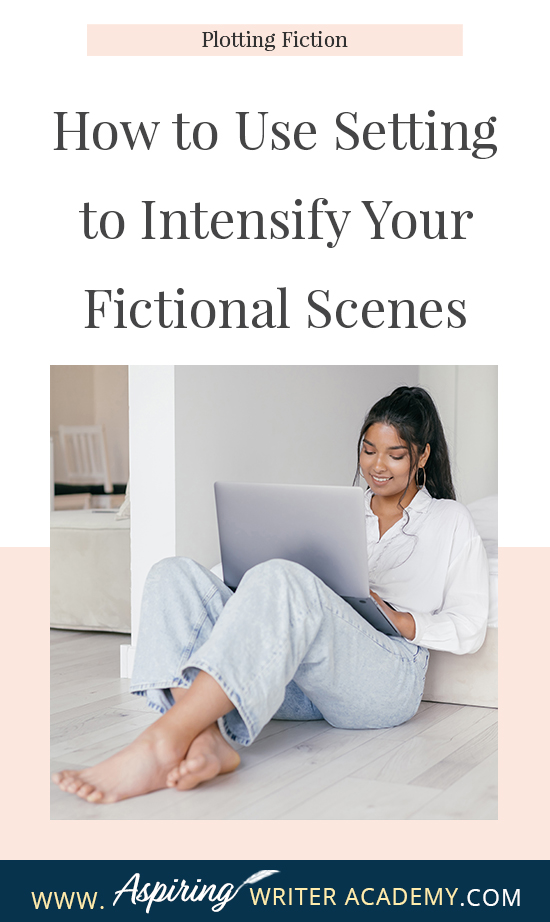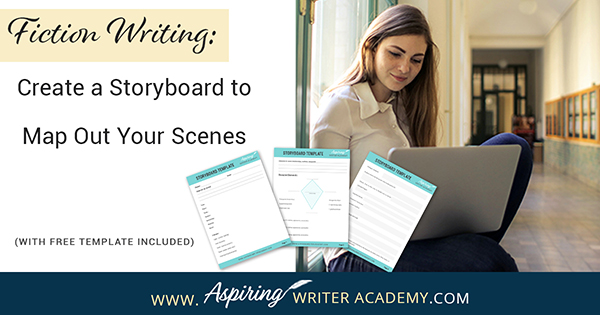How to Use Setting to Intensify Your Fictional Scenes
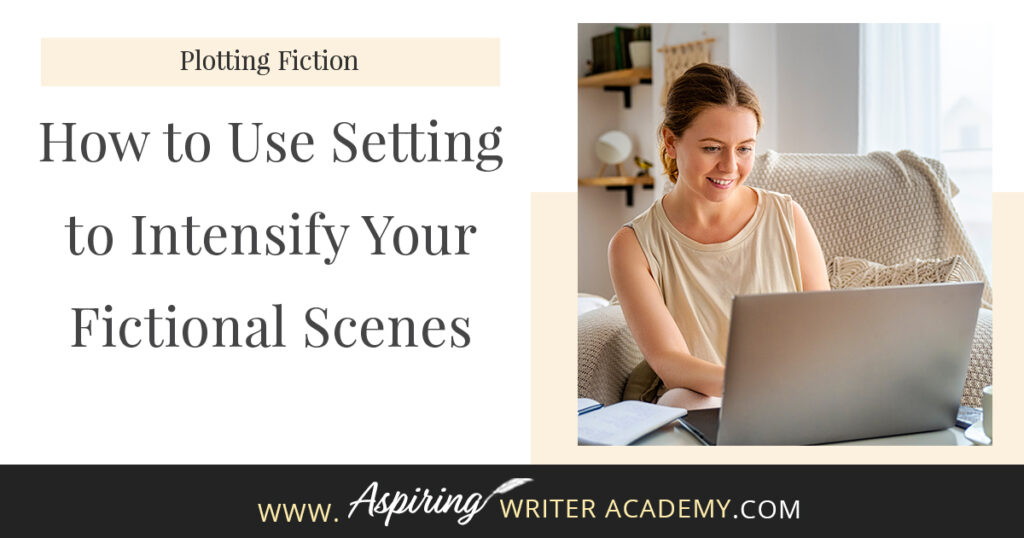
While it is important to focus on the characters and plot of your fictional story, how much attention do you give to the setting? Do you use the weather to depict mood a little too often? Are your scene details randomly inserted without any real purpose or meaning?
In How to Use Setting to Intensify Your Fictional Scenes, we help you create unique settings that work on multiple levels to enhance the scene, reveal your character’s personality, and build intensity into each story conflict.
Follow along as we discuss:
1) Stage Set Up: Why You Should View Your Scene like a Movie Camera
2) How to Use Setting to Reveal Your Character’s Personality
3) How the Setting Can Help or Hinder the Characters and add tension to the Plot
1) Stage Set Up: Why You Should View Your Scene like a Movie Camera
Each scene should stay in one character’s POV (point-of-view). You should not switch POV until the scene is finished. Then you can start a new scene with a new POV. No head-hopping within the same scene.
If you head-hop between characters, the reader cannot experience the full progression of thoughts and emotions the scene elicits from beginning to end. The scene loses impact, and the characterization is only half formed resulting in ‘cardboard’ or ‘shallow’ characters. The reader may also get confused or ‘mental whiplash’ from switching from one character to another within one scene. They may wonder—who’s scene is this anyway? Who am I supposed to root for?
You may see older books with multiple POV’s per scene. Some distinguished authors may even be able to pull it off effectively. But publishing standards change and in today’s industry, it is advised to only use one.
Use only one POV per scene, as if viewing the scene from the lens of a movie camera.
Absolutely everything in the scene should be viewed from the eyes of your POV character. The POV character’s 5 senses (see, hear, smell, taste, feel-touch) and their interactive experience within the scene brings the setting to life.
When your character walks into a room what is the first thing this character sees? What can this character hear? The character has to experience it before you, the author, can convey the setting details to the reader. Each segment in your character’s POV, like the lens of a movie camera, must come from a single focus. Swing the focus around to the left, to the right, up, down. The character’s gaze must shift to take it all in.
Before you write the scene, it is helpful to create a storyboard list of all the items, furniture, or objects that could be in this scene. If you get stuck, think about the purpose of the scene. What is your character there to do? Considering their personality, which items would draw your character’s attention? Does the character’s mood cause him or her to zero-in on a small detail that would normally go unnoticed?
For more information and a free downloadable Storyboard Template see: Fiction Writing: Create a Storyboard to Map Out Your Scenes
2) How to Use Setting to Reveal Your Character’s Personality
Considering the purpose of the scene and your character’s goal that he or she would like to achieve in this scene, which objects or setting details can you insert into this scene to reveal your character’s personality?
What are your character’s habits, likes and dislikes?
Example:
Does your character have a habit of drumming his fingers when he gets nervous? What can he drum his fingers on in this setting? Can you make whatever-it-is more interesting?
What if whenever your character is in deep thought she unconsciously strokes the back of the suede sofa, running her fingers over the texture?
Or perhaps when brainstorming a solution to problems she distractedly grabs the watering can and begins watering the plants (which could cause them to appear over-watered and send up a red flag of concern with the other characters watching. Someone may even step forward to take the watering can away from her! Especially if water starts leaking out from the bottom of the plant pots spilling water all over the place.)
How can you insert objects into the scene that will show the character’s likes and dislikes? If your character shows up at a dinner party, which foods will they gravitate toward, and which ones will they avoid? Why? Will your character be forced to eat or drink something he or she doesn’t like? Does the smell or taste of this food bring up a bad memory from the past?
Which setting details can reveal your character’s backstory?
Does anything else in this scene invoke a childhood memory or send your character’s thoughts back to either a pleasant or painful situation?
Example:
The character may walk into a place and see a painting on the wall. Perhaps his grandma once had that very same painting on the wall and it brings back memories of the last time they saw one another…and argued. Perhaps this causes the character to intentionally turn his back to the painting, so he does not have to look at it.
How does the setting or details of the setting make your character feel?
Does sunshine make your character happy? Does she grab a pair of sunglasses and a big straw hat?
Or does rain make your character grumpy as he grabs an umbrella out of the closet?
Does the smell of smoke and burnt roast in the oven cause your character agitation and disappointment? Will he have to grab potholders out of the drawer to extract the burnt meal or get a fire extinguisher if a fire has broken out?
What emotions can the setting of the story world set off?
Is there something in the setting that serves to change the character’s perspective?
Example:
Let’s say your character is expected to close an important business deal, but then he looks out the window and sees a child playing with a simple paper airplane, and it reminds him of his grandma once telling him that one day he’d realize it is the simple things in life that matter…and he realizes that what he really wants to do is invest in a children’s program instead of going forward with this deal. If there is a lot of money riding on that business deal, this could cause a lot of tension between your character and the other characters involved.
Always ask yourself—what can be going on in the background in addition to the physical action and dialogue in a scene?
How can your characters interact with the setting and story world around them?
3) How the Setting Can Help or Hinder the Characters and add tension to the Plot
In addition to enriching the story world with believable props and helping to reveal personality, the setting can also help or hinder your character as he or she attempts to achieve the scene goal. This gives a purpose to the details of the setting and makes your setting “active.” The setting plays a part in the story.
The items in your scenes should have a reason for being included. What will help your character in this scene? Will something the character sees or interacts with now come up again and be important in the climax of the story?
Example:
If you show your garden-loving character planting or interacting with flowerpots at least three times during your story, then it would be believable at the end of the story if the villain chasing your character trips over a flowerpot allowing your main character to get away. In this instance, the flowerpots not only set the scene and reveal personality (a character who loves plants), but they also help the character in the plot.
Always ask yourself: What can be useful to help the character in this scene? What can he use to try to achieve his goal? Which objects will be needed again later in the story?
The scene setting can also provide items that trip up your main character and perhaps help the antagonist or villain who opposes him. What can be inserted into the setting to trip up your character and make them fail?
Example:
A woman needs to deliver important business papers to a meeting on time, but her car breaks down and when she tries to run across the street on foot, she is forced to dodge the various floats in a parade or a crowd of protesters who have taken to the street waving signs and blocking her path. As a result, she misses the meeting and loses her job, to the delight of her fiercest rival.
Which items can help or hinder your POV character as he or she strives to achieve their SCENE GOAL?
What can be useful to help the character in this scene? And be used to try to achieve his goal?
How can something trip up your character in this scene to add anxiety, tension, and more conflict to the scene? Or to make achieving their goals harder?
If fighting the bad guys what can the character use in this scene to defend himself? An umbrella? A frying pan? Considering your character’s personality, which object is he or she most likely to use? Which items and details will be useful or important?
In the movie, Home Alone, the young boy uses toys and household items to lay traps for the villains trying to break into his house.
Watch Home Alone On Amazon: Click Here
In the Disney movie, Tangled, Rapunzel uses a cast-iron frying pan to hit Flynn Rider over the head when she finds him breaking into her tower. He finds it is a useful weapon and uses it again later to defend himself from villains.
Watch Tangled On Amazon: Click Here
In the movie, Jumanji: Welcome to the Jungle, the setting plays a huge part as the characters learn the strengths and weaknesses of their avatar bodies. In one scene, the character Fridge goes to the outdoor market and impulsively eats what he thinks is bread, only to discover it is cake, his avatar weakness, which causes him to explode and lose one lifeforce bars in the game. This increases the story tension.
Watch Jumanji: Welcome to the Jungle On Amazon: Click Here
In one of the Rambo movies, the main character uses mud to hide himself against a cliffside wall, and in Rambo: Last Blood, the character sets unique traps hidden on his ranch and inside underground tunnels beneath the fields. As the traps go off one by one, the story tension builds.
Watch Rambo: Last Blood On Amazon: Click Here
In the movie, The Matrix, the characters need to be near a telephone to receive a call that can transport them in and out of the simulated system. They also need weapons they can pick up at different locations. When the characters have trouble finding these items, it raises the story tension.
Watch The Matrix On Amazon: Click Here
Before you write your scene, take out a piece of paper and brainstorm:
How can setting details, objects, or the layout of furniture, or items in this place, in this scene, help or hinder the character in their quest to achieve their story goal?
We hope you have enjoyed our blog post How to Use Setting to Intensify Your Fictional Scenes and that you have gained some valuable tips to enhance your story.
If you have any questions or would like to leave a comment below, we would love to hear from you!
If you would like even more help writing scenes, you may also want to download our Free Brainstorming Your Story Idea Worksheet.
Do you find it difficult to create compelling antagonists and villains for your stories? Do your villains feel cartoonish and unbelievable? Do they lack motivation or a specific game plan? Discover the secrets to crafting villains that will stick with your readers long after they finish your story, with our How to Create Antagonists & Villains Workbook.
This 32-page instructional workbook is packed with valuable fill-in-the-blank templates and practical advice to help you create memorable and effective antagonists and villains. Whether you're a seasoned writer or just starting out, this workbook will take your writing to the next level.
Our Goal for Aspiring Writer Academy is to help people learn how to write quality fiction, teach them to publish and promote their work, and to give them the necessary tools to pursue a writing career.

ENTER YOUR EMAIL BELOW
TO GET YOUR FREE
"Brainstorming Your Story Idea Worksheet"
7 easy fill-in-the-blank pages,
+ 2 bonus pages filled with additional story examples.
A valuable tool to develop story plots again and again.
Other Blog Posts You May Like
How to Write a Novel While Working Full Time
How to Manipulate Pacing to Increase the Intensity of Your Scenes in a Fictional Novel
Learn to Plot Fiction Writing Series: Story Analysis of the Disney movie “Frozen”
Fiction Writing: The 3 Different Levels of Editing
Learn To Plot Fiction Writing Series: Story Analysis of the Movie “Top Gun: Maverick”
5 Reasons Your Writing Sucks! (And How to Fix It)
How to Brainstorm a New Novel Using Goal, Motivation, and Conflict
How to Write Query Letters (for Fiction)
Slingshot Week: How to Set New Goals for Writing in 2023
Novel Writing Tips: Don’t Bury the Dialogue!
How to Choose Characters to Populate Your Fictional Story
Fiction Writing: Critique Group Etiquette & Warning Signs of a Good Group Gone Bad
How to Prep for NaNoWriMo (National Novel Writing Month)
Fiction Writing: How to Plot a Story where the Antagonist is an ‘Invisible Foe’
Fiction Writing: How to Find a Critique Partner/Group
How to Research Information for a Historical Novel
7 Steps to Begin Writing a New Fictional Story
Learn to Plot Fiction Writing Series: Story Analysis of the movie “Signs”

is a multi-published author, speaker, and writing coach. She writes sweet contemporary, inspirational, and historical romance and loves teaching aspiring writers how to write quality fiction. Read her inspiring story of how she published her first book and launched a successful writing career.

